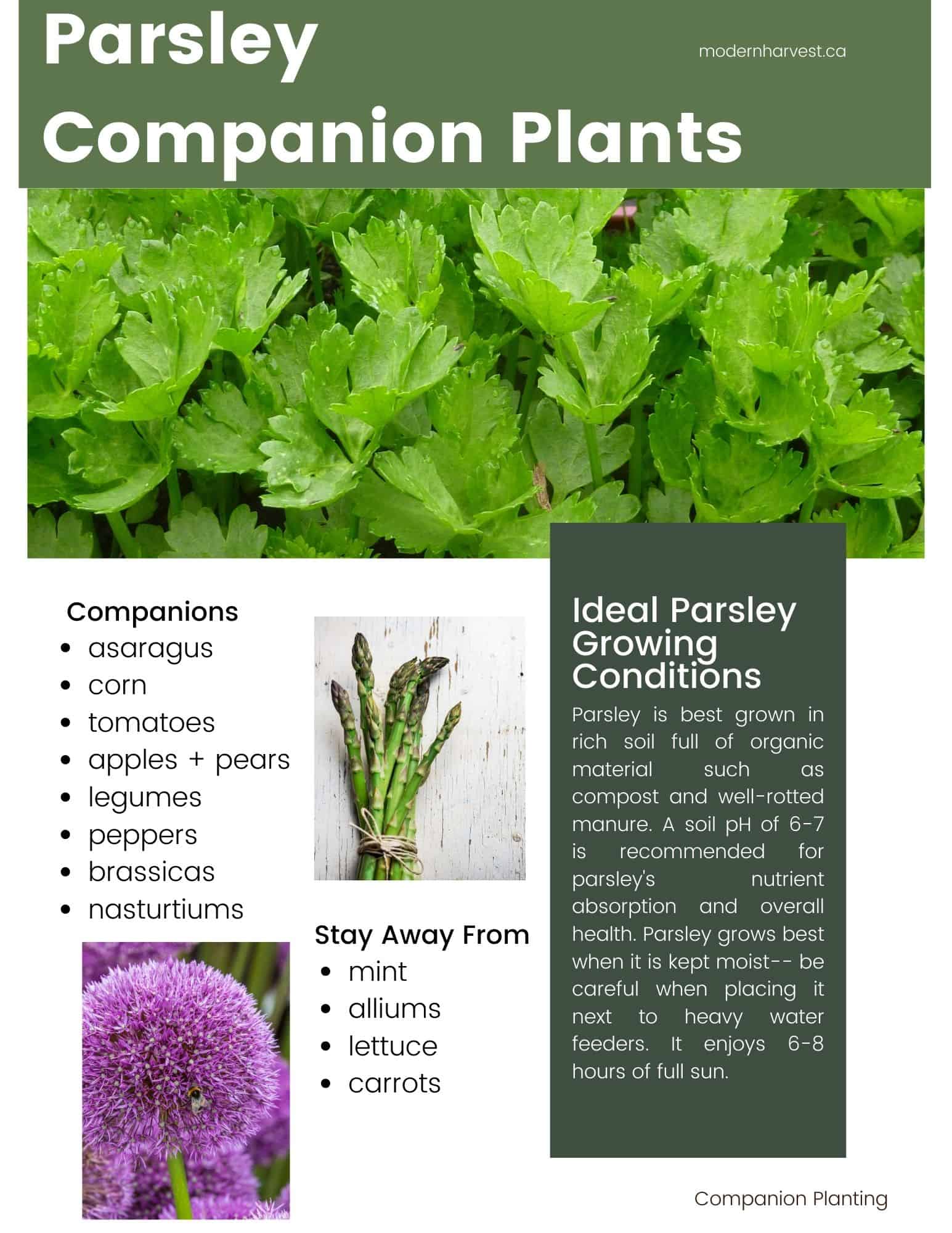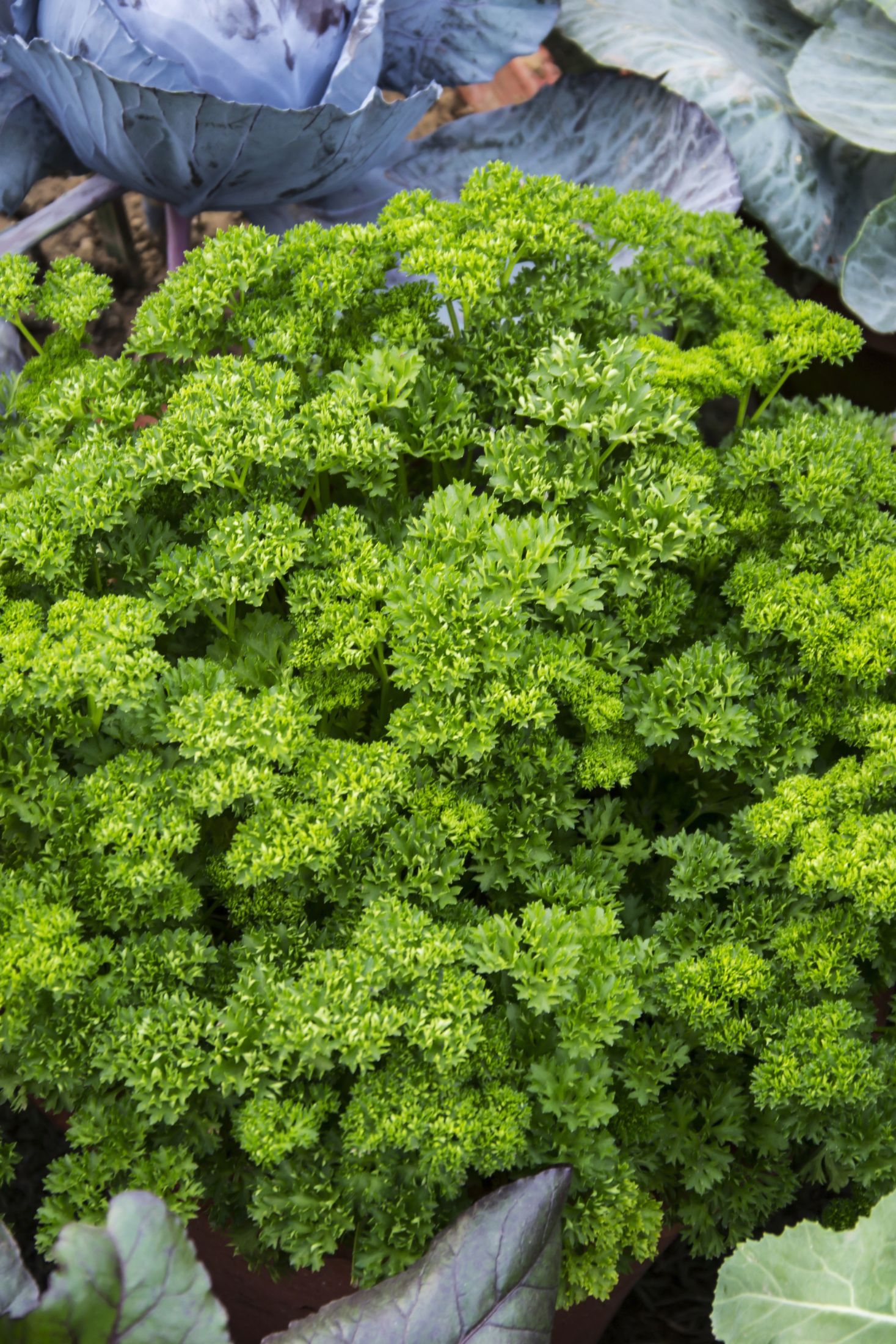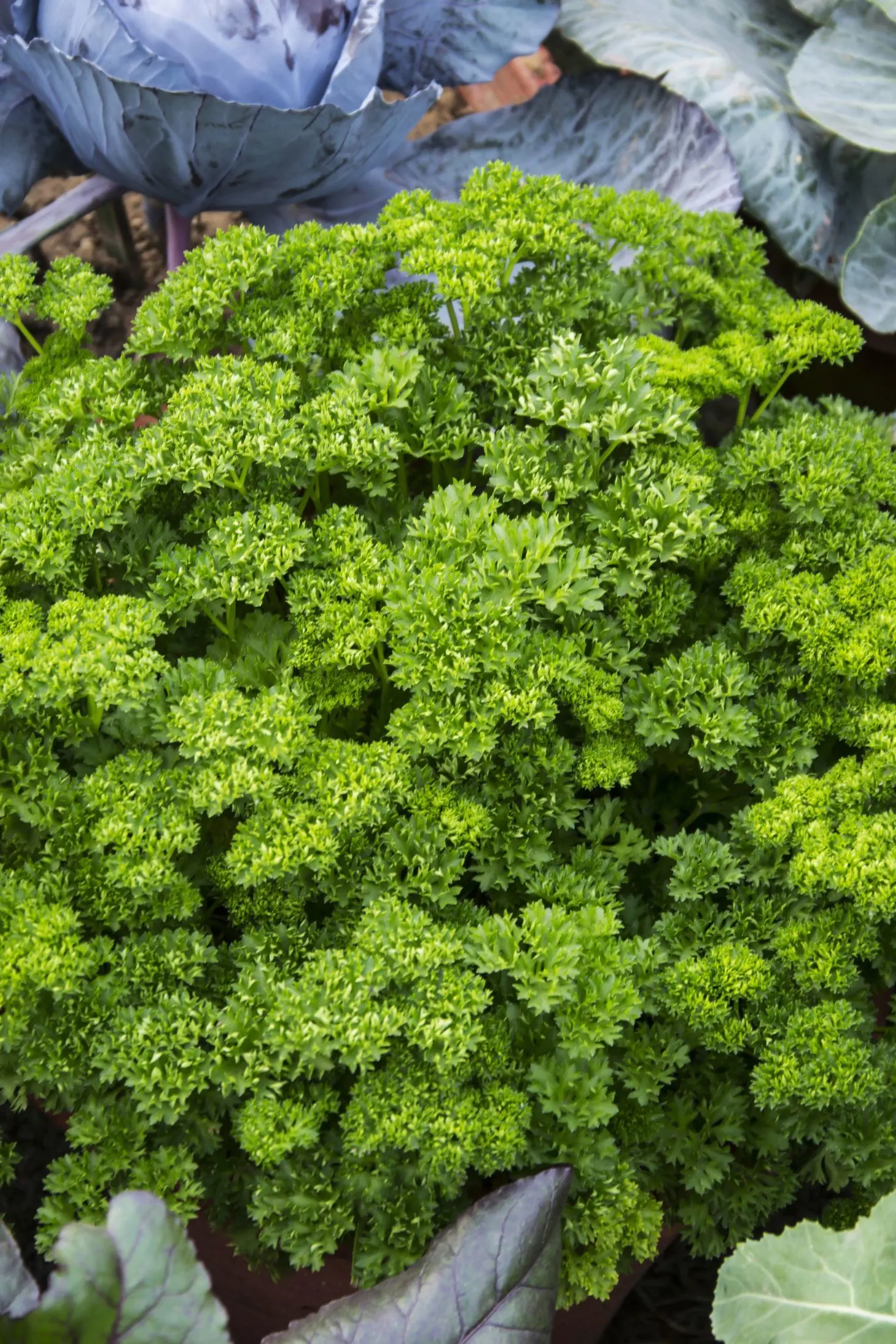The Ultimate Guide To Companion Planting With Parsley
The Ultimate Guide to Companion Planting with Parsley
Parsley is a versatile herb that can be used in a variety of dishes, from salads to soups to stews. It is also a valuable companion plant, meaning that it can be grown alongside other plants to improve their health and productivity.
In this guide, we will discuss the benefits of companion planting with parsley, as well as some of the best plants to grow alongside it. We will also cover some of the plants that should be avoided, as they can compete with parsley for resources or attract pests.
Benefits of Companion Planting with Parsley
There are many benefits to companion planting with parsley. Here are a few of the most important:
- Attracts beneficial insects. Parsley attracts a variety of beneficial insects, including hoverflies, ladybugs, and tachinid flies. These insects help to control pests that can damage other plants in the garden.
- Improves soil health. Parsley is a nitrogen-fixing plant, which means that it helps to improve the nitrogen content of the soil. This can benefit other plants in the garden, as nitrogen is an essential nutrient for plant growth.
- Discourages pests. Parsley can help to discourage some pests, such as carrot root flies and asparagus beetles. These pests are attracted to the carrot family, but they are not as fond of parsley.
- Provides shade and support. Parsley can provide shade and support for other plants, such as tomatoes and cucumbers. This can help to protect these plants from the sun and wind, and it can also help to prevent them from becoming top-heavy.
Best Companion Plants for Parsley
There are many different plants that can be grown alongside parsley. Here are a few of the best:
- Asparagus: Asparagus and parsley are both members of the Apiaceae family, and they benefit from each other's presence. Asparagus provides shade for parsley, and parsley helps to attract beneficial insects that control asparagus pests.
- Beans: Beans fix nitrogen in the soil, which benefits parsley. Parsley also helps to attract beneficial insects that control bean pests.
- Carrots: Carrots and parsley are both members of the Apiaceae family, but they do not compete for the same resources. Parsley can help to attract beneficial insects that control carrot pests.
- Corn: Corn is vulnerable to corn earworms, cutworms, and armyworms. Parsley attracts parasitic wasps and tachinid flies, which hunt the worms that prey on corn. In addition, parsley helps to repel other insects that might damage the crop.
- Lettuce: Lettuce and parsley can be grown together, but they should not be planted too close together. Lettuce can cause parsley to bolt (go to seed) too early in the growing season.
- Onions: Onions and parsley are both members of the Allium family, and they can compete for resources. However, they can also be grown together if they are planted far enough apart.
- Spinach: Spinach and parsley can be grown together, as they have similar growing requirements. Spinach can provide shade for parsley, and parsley can help to attract beneficial insects that control spinach pests.
Plants to Avoid Planting Near Parsley
There are a few plants that should be avoided when companion planting with parsley. These include:
- Mint: Mint is a very invasive plant, and it can quickly take over a garden. It is best to plant mint in a separate pot or area of the garden, away from other plants.
- Dill: Dill and parsley are both members of the Apiaceae family, and they can compete for resources. In addition, dill can attract pests that can damage parsley.
- Fennel: Fennel and parsley are both members of the Apiaceae family, and they can compete for resources. In addition, fennel can attract pests that can damage parsley.
Conclusion
Parsley is a versatile and beneficial herb that can be grown in many different gardens. Companion planting with parsley can help to improve the health and productivity of your garden, and it can also help to control pests. By following the tips in this guide, you can create a thriving garden that is full of delicious and healthy food.
Parsley is a versatile herb that can be used in a variety of dishes, but it's also a great companion plant for other vegetables. When planted near the right plants, parsley can help to deter pests, improve the flavor of other crops, and even improve the overall health of your garden soil.
If you're interested in learning more about companion planting with parsley, I recommend visiting Gardenia Inspiration. This website has a comprehensive guide to companion planting, including a section on parsley. You'll find information on which plants are good companions for parsley, as well as tips on how to plant and care for parsley in your garden.
I hope you find this information helpful!
FAQ of companion planting with parsley
Q: What are some good companion plants for parsley?
A: Parsley is a great companion plant for many different types of vegetables and fruits. Some of the best companion plants for parsley include:
- Asparagus
- Beans
- Carrots
- Chives
- Corn
- Lettuce
- Melons
- Onions
- Peppers
- Tomatoes
These plants all benefit from being planted near parsley, as parsley can help to repel pests, attract beneficial insects, and improve the overall health of the soil.
Q: What are some plants that I should avoid planting near parsley?
A: There are a few plants that you should avoid planting near parsley, as they can either compete for resources or attract pests. These plants include:
- Carrots
- Mint
- Fennel
- Dill
- Coriander
Q: How does companion planting with parsley work?
A: Companion planting is a gardening technique that involves planting certain plants together in order to benefit each other. In the case of parsley, it can help to repel pests, attract beneficial insects, and improve the overall health of the soil.
For example, parsley can help to repel the asparagus beetle, which is a major pest of asparagus plants. It can also attract hoverflies, which prey on aphids. Additionally, the roots of parsley help to aerate the soil, which can improve drainage and water retention.
Q: What are the benefits of companion planting with parsley?
A: There are many benefits to companion planting with parsley, including:
- Increased crop yields
- Improved pest control
- Enhanced soil health
- Reduced need for chemical fertilizers and pesticides
Q: How do I plant parsley as a companion plant?
A: When planting parsley as a companion plant, it is important to consider the needs of the other plants in your garden. For example, parsley prefers full sun, so you will want to plant it near other plants that also need full sun. Additionally, parsley is a heavy feeder, so you will need to make sure that the soil is rich in nutrients.
Here are some general tips for planting parsley as a companion plant:
- Plant parsley near plants that have similar water and nutrient needs.
- Plant parsley near plants that benefit from being repelled by pests or attracting beneficial insects.
- Plant parsley near plants that improve the overall health of the soil.
Image of companion planting with parsley
5 different images of "companion planting with parsley" from Pinterest:
- Image 1: Parsley and tomatoes. Parsley is a good companion plant for tomatoes because it helps to deter pests such as aphids and spider mites.
- Image 2: Parsley and carrots. Parsley helps to improve the flavor of carrots and can also help to deter carrot flies.

- Image 3: Parsley and beans. Parsley helps to improve the nitrogen content of the soil, which is beneficial for beans.

- Image 4: Parsley and lettuce. Parsley helps to repel aphids and other pests that can damage lettuce.

- Image 5: Parsley and onions. Parsley and onions help to repel each other's pests, so they can be planted together to deter both pests.

Post a Comment for "The Ultimate Guide To Companion Planting With Parsley"